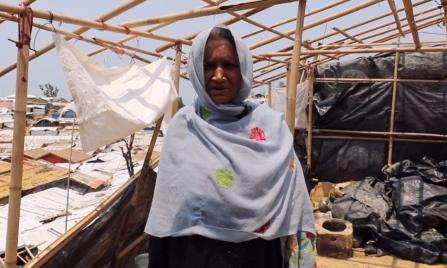-
Who we are
WHO WE AREThe International Organization for Migration (IOM) is part of the United Nations System as the leading inter-governmental organization promoting since 1951 humane and orderly migration for the benefit of all, with 175 member states and a presence in 171 countries.
-
Our Work
Our WorkAs the leading inter-governmental organization promoting since 1951 humane and orderly migration, IOM plays a key role to support the achievement of the 2030 Agenda through different areas of intervention that connect both humanitarian assistance and sustainable development.
What We Do
What We Do
Partnerships
Partnerships
- Where we work
-
Take Action
Take Action
Work with us
Work with us
Get involved
Get involved
- Data and Research
- 2030 Agenda
In an increasingly complex and inter-connected risk landscape characterized by unprecedented patterns of international and local mobility, strengthening disaster risk governance and prevention at all levels has taken on a new urgency. Currently, some 25 million people are displaced each year by disasters. It is expected that hazardous events – amplified by compound risk factors such as ecosystem degradation, climate change, conflict, epidemics and pandemics, water scarcity and unregulated urbanization – will increase displacement in the years to come and compel millions more to migrate within and across borders.
IOM supports States’ efforts to implement the priorities of the Sendai Framework for Disaster Risk Reduction by preventing and addressing disaster-related population movements and by harnessing the value that mobility can bring to reducing risk and building resilience to multi-hazard risk.
IOM programming includes assistance to countries to develop or update national and local Disaster Risk Reduction (DRR) and Climate Change Adaptation (CCA) policies and strategies that integrate human mobility considerations. In communities facing high-risk of disasters and displacement, the Organization supports hazard and vulnerability analysis, community-based disaster risk management, livelihoods' diversification strategies and community early warning and preparedness systems to prevent risk and enable more effective response. IOM also provides policy and operational support to countries undertaking planned relocation of communities from areas at high risk.
In post-disaster settings, the Organization supports “build back better” goals and durable solutions by integrating DRR measures in the rehabilitation of infrastructure, services, livelihoods and the environment. Through specific initiatives and programmes, IOM supports the inclusion of migrants and diaspora communities in preparedness, recovery and resilience-building efforts.
Partnerships and multi-stakeholder engagement are key to these efforts. IOM works closely with the UN Office for Disaster Risk Reduction (UNDRR) and other UN partner entities to ensure coordinated and coherent support for DRR, in accordance with the spirit of the system-wide UN Plan of Action on Disaster Risk Reduction for Resilience. IOM is an executive partner of the Capacity for Disaster Reduction Initiative (CADRI), which is the largest existing inter-agency mechanism that works towards strengthening countries’ capacities to reduce disaster and climate risks.







